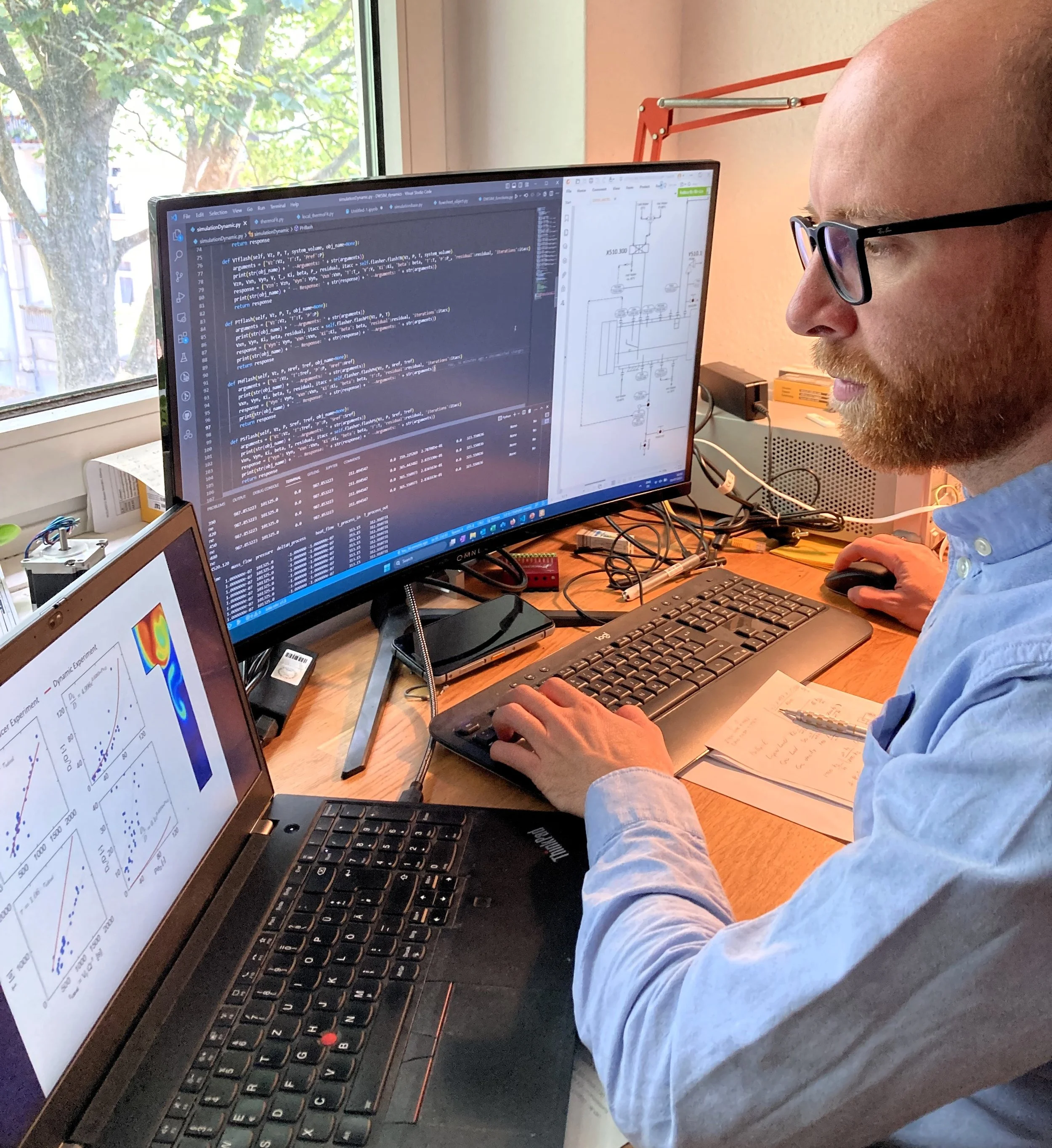Energy savings through digital optimization of our production process
As aerogel-it we pursue and drive the decarbonization of multiple industries. Apart from the use of non-fossile raw materials for our products such as lignin, this includes energyefficiency across our whole value chain.
One important manufacturing step of aerogels is the so-called supercritical drying where supercritical CO2 at high pressure and temperature is used as extraction liquid to very mildly remove solvent from a gel precursor. In the supercritical state, CO2 looks and behaves similar to a liquid (check out the comments for more details if you are curious). Why is this necessary? Because using a conventional solvent and drying method would destroy the material and its fine pores - they would simply collapse due to huge capillary forces. Supercritical drying gives access to the super-fine pores of aerogels with less than 100 nm diameter (around 1000x less than a human hair!). These pores give aerogels their amazing performance.
Energy efficiency is important here: Getting CO2 to the supercritical state requires a lot of energy for compression and heating, which forms a large part of the total energy consumption of our process. The aerogel-it team has years of experience with industrial aerogel manufacturing and its challenges, and we have the clear goal to save energy wherever possible. We will establish the most energy-efficient aerogel manufacturing processes in our future plants!
An important milestone has now been reached: Our process expert Alberto recently completed a fully virtual thermodynamic simulator of this supercritical drying step which now enables us to run the process digitally. By optimizing the process with this digital twin, Alberto could reduce the energy consumption by more than 95%!
And it does not stop with the optimization at the planning stage. Once our production plant is running, the process control systems will feed into this digital twin to optimize manufacturing via machine learning in real-time!
Alberto working on the digital model for optimization of our aerogel production process.

